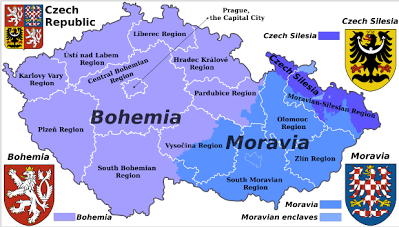
Moravian Church
The origins of the church lie in C14 & C15 Prague, in Central Bohemia, next to Moravia in the current Czech Republic. Visitors to Prague will almost certainly stand in Old Town Square but may not realise that the statue is of the originator of the movement that became the Moravian Church.
Jan Hus (1369—1415) was Professor of Philosophy and Rector of Prague University. He and his Hussite followers had problems with some of the tenets of the dominant Catholic religion, and preached his beliefs in Bethlehem Chapel. The conflict between the Catholics and what was one of the earliest Protestant reformist movements led to the trial and death at the stake of Jan Hus for heresy in 1415 and two defenestrations (throwing people from windows!) in Prague, the latter of which, below, led quickly to the 30 Years War and the fleeing of the Hussites.
During the religious conflicts in Bohemia many Hussites had moved to Moravia before settling in Saxony in 1722 at the invitation of Count Nicholas von Zinzendorf. They created several Moravian communities before sending missionaries to spread the Moravian faith around the world. The Moravians from Saxony had no intention of settling in England as it had an established reformist movement but because they usually waited in London for ongoing vessels they met other worshippers, including the Wesleys and in 1742 a Moravian congregation formed in Fetter Lane, London.
Another reformer, John Cennick, who knew the Wesleys in Bristol, spent 1740 - 45 as an itinerant preacher in North Wiltshire and formed several societies which in 1745 were given to the Moravians to manage. In the C19 a Moravian Minister, John England, produced these notes.
The Moravian archives in North London hold many Malmesbury documents and here is part of the first logbook of the ‘independent’ Malmesbury congregation with the five committee members, including the familiar name of Lockstone.
The congregation in Moravian churches were organised in ‘choirs’ according to age, gender and marital status. Familiar names include Jones, Matthews, Lockstone, Hanks, Walker, Weeks, Wicks. Moravian burial grounds were also usually organised along the ‘choir’ system and the burial plan in the archives seems to show that Malmesbury began that way but later burials were organised in family groups. Another feature of Moravian burial grounds was the flat gravestones indicating that in death all were equal in the eyes of the Lord.
After the Malmesbury Moravian settlement ceased to function and was sold the new owner allowed the site to deteriorate and several grave-stones were moved, in at least one case, separating a family. Prior to the museum purchasing the Nigel Pocock from Tytherton Moravian Community organised a team to tidy up the graves and re-map burials.


